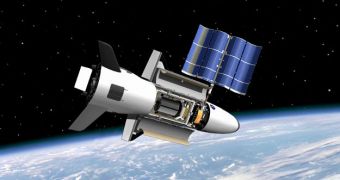The Cape Canaveral Air Force Station (CCAFS) is at this point the home of two very important space vehicles, each of which still needs to prove its worth in a first test flight. If the missions are successful, then one of the spacecraft would ensure that uninterrupted access of American astronauts to the International Space Station (ISS), whereas the other would provide a highly-mobile space platform to the US Air Force (USAF), for a wide variety of applications. The latter mission is the secretive X37B prototype, which is also known as the Orbital Test Vehicle. It arrived at the CCAFS sometime in February, and is currently undergoing final preparations for its launch.
Scheduled for April 19, this would be the first instance in which such a machine is launched from Florida. The spacecraft has relatively small dimensions (29-foot-long, 15-foot-wide), but it is capable of great things in orbit, its manufacturers say. The space plane itself has been developed and built at the Boeing Phantom Works facility, which is located in Southern California, Space reports. The overall design resembles that of a small space shuttle, and the new instrument even has a cargo bay. But the main difference is that the X37B is an unmanned craft and that it would be used primarily for attack and defense purposes (presumably).
According to officials in the USAF, the new space plane, weighing some 11,000 pounds, will be delivered to orbit aboard an Atlas 5 deliver system. “It is now undergoing spacecraft processing including checkout, fueling, and encapsulating in the 5-meter fairing of the Atlas 5 [rocket],” a USAF spokesperson said in a statement. Occasionally, people involved in this project release updates on how the spacecraft is doing, even though other details about it are classified. The entire program is managed by the Air Force Rapid Capabilities Office, Space reports.
This project was initially developed by NASA, and was only later on handed to the Pentagon. In the version of the spacecraft proposed by the American space agency, the orbiter would be endowed with a 7-foot-long payload bay, which would be capable of deploying a number of small scientific payloads. Once in the hands of the Pentagon, the X-37B received a lot of attention from the Defense Advanced Research Projects Agency (DARPA) as well, which tested it throughout 2007.

 14 DAY TRIAL //
14 DAY TRIAL //